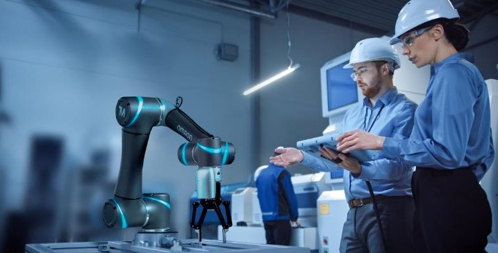Tim Foreman, Research and Development Manager, OMRON
Ten years ago when we received enquiries about AI-based projects, they were mainly driven by hype or FOMO. When I asked why they wanted to get into AI, the answer, more often than not, was either ‘because my boss asked me to’, ‘because we have a lot of data’ or ‘because it seems like an interesting area’. None of these were particularly solid reasons and certainly didn’t justify the hefty investment that AI applications would have required at that time.
That is changing, and hope, rather than hype or ‘FOMO’, is the driver. Customers don’t ask whether we can help them with AI anymore. They ask us whether we can help with predictive maintenance, quality control or process optimisation. They come to us with a problem that they want us to help solve. The adoption of AI is no longer a motive or an aim in itself. Instead, AI has become an ‘enabler’.
Whatever the industry – whether food & drink, pharmaceutical, electronics or automotive – the end goal is the same: producing high-quality, defect-free products at a lower cost, using less energy and less labour. And AI can be one of a suite of solutions for achieving those objectives.
Past, present & future
Just as attitudes have evolved, so has technology. Although AI has existed as a concept since 1957, early applications were unfeasibly expensive and slow: it took a month to obtain the results of a simple calculation due to processing power limitations. Thanks to advancements in mobile technology, computer storage and processing speeds, today, calculations can be carried out in milliseconds and the cost has fallen considerably.
Although tech giants like Amazon and Google have been using AI for some time, AI is still in its infancy in an industrial or factory floor context. I would liken its lifecycle stage to that of robotics 15 years ago, when you needed a maths degree to control a six-axis robot. To implement AI-based systems, you still need experts; you need to understand what you are doing and it only makes sense in niche applications where the cost of entry can be justified by the benefit.
AI for invisible issues
It is also important to remember that AI is not a panacea. As machine builders, data scientists and engineers, we can be guilty of automatically defaulting to tech for the answers, when the more straightforward solution is something far simpler and less sophisticated.
Take for example, a piece of conveyor that is broken and bent. That is an engineering problem that can be identified and resolved using a traditional mechanical solution. It is the less obvious, intermittent issues – for instance manifesting in micro-stoppages – where AI can add value.
AI-powered problem-solving in practice
Here’s a real-life example: we were called in to help an automotive customer who was having problems with micro-stoppages. After performing a data scan, we carried out a ‘sanity check’. This involved connecting probes to the machine to create pictures of the signals that were being generated to establish what was happening versus what should have been happening. We then developed an experiment to pinpoint the root causes. This enabled us to identify and resolve about ten issues. The one that sticks in my mind involved a sensor malfunction: one of the sensors we were monitoring seemed not to be working. When we asked the customer to check there was a broken connector. We also identified some programming issues, including a logic mistake that was replicated in many machines on site, which they were then able to fix. All in all, they saved tens of thousands of euros in scrapped product and reduced downtime by 50%, which translated to an additional four hours of production time per month.

In another application example, we are currently working with a food industry customer to improve seal integrity. By applying an AI approach to the sealing operation, we will increase the shelf life by several days and minimise the occurrence of faulty seals, thereby eliminating the risk of a complete product batch being rejected by retail customers.
Collect, analyse & utilise
Most of the projects so far have deployed Omron’s AI Controller – the world’s first AI solution that operates ‘at the edge’ (with the hardware based on the Sysmac NY5 IPC and the NX7 CPU). This controller recognises patterns based on process data collected directly on the production line. It is integrated into our Sysmac factory control platform, which means it can be used in the machine directly, to prevent efficiency losses.
With examples like these and with AI being such a hot topic in the media, it would be easy to assume that every manufacturing business is on board with AI, when this really isn’t the case. Examples of AI in use in the factory are few and far between and projects are heavily reliant on the expertise of the technology provider. In another ten years, it will be a different story. Tools will develop that make AI far more accessible and user-friendly, enabling manufacturers to take ownership of AI and run with it.








